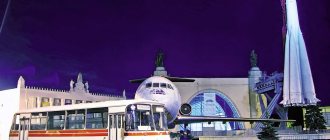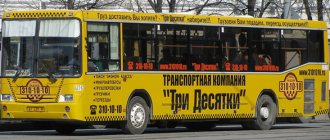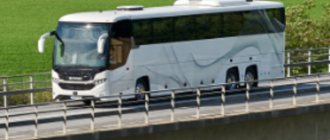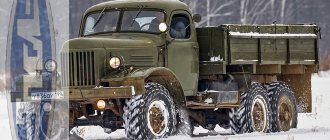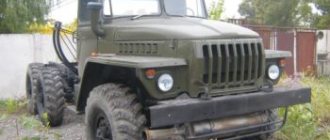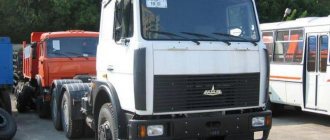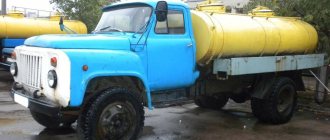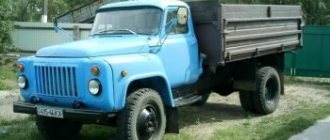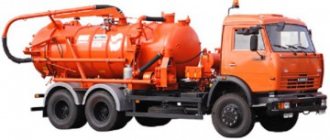How it all began
Since 1895, a small workshop has been opened in the city of Budapest for blacksmithing and carriage activities. And since 1949, as a result of the merger of the two companies, the Ikarus enterprise began its work. So in 1953, Ikarus buses from a Hungarian manufacturer begin to appear.
Even a year later, Icarus is a symbol of that time, which pleased with its versatility and different types of outlines.
After the 1960s, Ikarus buses were supplied to Scandinavia, as well as to the countries of Africa, the CMEA and the FRG. Since the 1970s, deliveries have reached the USSR. Surprisingly, but a fact: joint production was also organized in Cuba, Indonesia, North Korea, Canada and the USA.
History of "Ikarus"
Who does not know and does not remember the yellow "Ikarus" in Narva? Probably just the youth. I remember my childhood (the year was about 1975) and the brand new Ikarus, which had just appeared in Narva. They already drove around the city, even stopped at bus stops, but the doors did not open to let passengers in. Instead of a route number, the word “Running in” flaunted on the plates. So the passengers admired them from the side, shiny, spacious and with seats covered with polyethylene.
And they came to replace the cramped, but sincere and with a large number of seats, "Lviv" buses. Of course, the new Ikarus included much more people, but in winter they clearly lost to their predecessors. In cold weather, in order not to miss the stop and just admire the scenery outside the window, you had to make a window on the frozen glass with your breath ...
But enough nostalgic memories, let's find out the history of these buses. Ikarus began its journey from the distant past, when its founder, Imre Uri, created a carriage workshop in Budapest. Imre's father was a simple village blacksmith and he often had to shoe horses, or repair carriages, carts, plows, in which Imre Uri himself took part. Having accumulated funds, Imre Uri went to the Hungarian city of Budapest, in order to create his own blacksmith and carriage workshop in 1895, at 21 Elemer Street, Pest district.
By this time, cars had already appeared on the streets of Hungarian cities for a long time and their number was growing, but they were not available to ordinary people. The carriages and simple carts produced in his workshop were in great demand, because they had one indisputable advantage over cars and technical progress - their low price. This continued until the twenties of the last century, until customers came to Imre Uri's workshop with a new proposal.
It was necessary to make bodies for several buses based on the Ford TT. All this was perfectly done, and the body for the new bus was very comfortable. And here orders for the production of bodies for buses began to pour into his workshop. The bodies were still built on wooden frames, with a wooden frame sheathed with plywood and metal sheets, but Uri managed to outperform competitors in terms of the care taken in manufacturing and the quality of the finish.
Large orders began to arrive starting in 1927, when an order for 60 bodies on the Raba L chassis was made by the Mavart company, which is engaged in intercity passenger transportation.
These buses began to be produced already at the Ikarus state enterprise, which was formed by the merger of the Uri brothers company and the Ikarus plant, which had the same name as the brothers' enterprise, but was only engaged in the production of radiators for aircraft, cars and other small parts.
Ikarus 311. 1948.
The merged Ikarus was initially content with small-scale production of buses, but starting in 1951, when the Ikarus 30 was created, completely designed and built from parts produced at the Ikarus factory.
This model served as a prototype for the Soviet PAZ lineup.
It became a continuation of the Mavag TR3.5 model and became the second bus in Europe to have a monocoque body. The only thing missing was that the engine changed its location from the front to the rear.
Ikarus30.
Mavag TR3,5 in a Hungarian film about the events of 1958.
But this would have raised the prices for Ikarus buses quite a lot. Therefore, all Ikarus 60 buses and even the very popular Ikarus 66 were front-engined.
Ikarus 60.
Ikarus 60 models had different options, both trailed and articulated.
On the basis of these two models, even the first bodies were made - accordions, which made it possible to significantly increase the interior of the bus. On the basis of these models, the first Hungarian trolleybuses, Ikarus Puli, were also made.
The rarest photo. Pay attention to the passenger trailer.
The most sought after was the Ikarus 66, which was made from lightweight materials, its streamlined look was eye-catching, and the engine, which was then placed in its rear, allowed it to accelerate over 100 kilometers per hour.
But it was just an ordinary city bus. On its basis, the tourist Ikarus 55 was also created, which differed from the city only by a more powerful engine and a tourist-level interior. Three years later, on the basis of Ikarus-66, the tourist Ikarus-55 was created, the car became even more rounded and swift. For these swift lines, the bus was nicknamed "Rocket".
On the basis of Ikarus-55, the production of Ikarus-Lux began with a 170-horsepower Csepel engine and a 32-seat saloon. It was these machines that became the basis of Hungarian exports and stayed in production for more than 20 years. Ikarus-Lux was the main international bus operated in the USSR. They passed more than a million kilometers without overhaul, and they could be found at the bus stations of Moscow, Leningrad, Riga, Tallinn and many other cities of the USSR.
Ikarus-66, released in 1952, turned out to be unlike any of its predecessors. Streamlined rounded shapes, body frame with light alloys. In the back of the bus, behind the hood flaps that opened like garage doors, there was a six-cylinder Chepel D-614 engine with a power of 145 hp. at 2800 rpm, which allowed the streamlined car to freely develop 100 km / h.
In the late fifties, the Ikarus-620/630 family appeared - unlike the brilliant models 66 and 55, these cars seemed to be some kind of simple ones.
They were divided among themselves by three enterprises: "Ikarus" made single cars, "Mavaut" articulated, and Bullets special and excursion. A large number of Ikarus-630s in the suburban version were operated in the Soviet Union. Dental offices, mobile hospitals and mobile post offices on the Ikarus-630 chassis worked in many of our cities. Six-cylinder diesel engine with 145 hp plant Csepel provided the car with good dynamic qualities. Buses could be delivered with the layout desired by the customer.
Cooperation with the automobile plant Csepel developed. Chassis frames and units suitable for various purposes and manufactured by Csepel made it possible to create a wide range of transport and utility vehicles for special purposes. Along with the growing export of buses, the production of mobile workshops for their maintenance began. In the early sixties, Ikarus began to produce various semi-trailers, vans adapted for the transport of various goods. Taking into account these requirements, a semi-trailer with a refrigeration unit is created, aggregated with a Csepel truck tractor.
The refrigerator was able to maintain the temperature of pre-chilled products - 20 degrees, even at an ambient temperature of +30. Such refrigerators transported chilled products between Soviet cities.
In 1962, Ikarus takes over the General Mechanical Engineering Plant in the city of Szekesfehervar. At the same time, after thorough experiments, the Ikarus-556 model 100-seat bus, designed primarily for urban transportation, was launched on the market.
It is equipped with a six-cylinder 170-horsepower engine located under the floor of the passenger compartment, air suspension and power steering. This bus opens a series in which the articulated version of the Ikarus-180 and its two-story version began to be manufactured.
The exceptional identity of the body parts provided these buses with special advantages for operating and repair enterprises, facilitating repairs and the provision of spare parts.
Since 1969, Ikarus-180 accordions have been regularly delivered to the USSR. From that moment on, the USSR became the largest importer of Hungarian buses.
Ikarus 180 1969
The most popular project in the history of Ikarus appears in 1967. This is a typical family of the 200th series with a modular design, thanks to which, by changing the number and arrangement of elements of the frame-panel body, it was possible to assemble buses of any length, height and with various door arrangements. This family provided for two engine mounting options: at the rear for single buses and under the floor for articulated ones. The body shape was functional, and therefore not outdated for a long time.
Ikarus-250
Ikarus-250
Ikarus-256
Ikarus-280
This family has received awards at international competitions, including the International Bus Week in Nice. "Two hundred" were in demand not only in our country, but also in many other countries, including the United States of America, where 723 Ikarus with Caterpillar engines and Allison automatic transmissions worked in eight cities. On the American continent, Cuba was, of course, the largest consumer of Ikarus, Hungarian cars became the main urban transport on the "Island of Freedom", they also carried passengers in Venezuela, Peru and Canada.
In the middle of 1984, the 200,000th Ikarus was assembled, and a new family of the “400th” series was introduced, which gave the customer the opportunity to choose any engine - “Slave”, “Man”, “Daf” or “Cummins”, since the universal motor frame is allowed.
The former socialist countries chose buses simpler and, accordingly, cheaper, with the Hungarian diesel RABA (these are the cars that Tushino-Avto assembles), and these cars were delivered to the West with Euro-2 engines, ABS and PBS, glued windows, electronic route displays.
When the socialist system collapsed in the early nineties, the well-being of Ikarus also collapsed. The production and sale of buses has declined sharply. Ikarus began to "rush about" in search of alternative models and new markets, Ikarus's subsidiary, Ikarus Special Coach Company, introduced a new series of E buses. It was also supposed to build small buses based on the units of the Zilovsky "Bull". The high-deck E96 won the tender for the supply of 200 vehicles to England. In 1999, after the privatization, "JSC IKARUSBAS" was founded, which became a member of the international concert "IRIBAS". But the days of the Ikarus were numbered. The last large bus rolled off the assembly line in February 2004, after which IRIBAS decided to build only compact cars for special orders.
Recommended for viewing:
Buses in Narva Stories
Gyrobus - flywheel bus
The history of the creation of the LiAZ-677 bus
Ikarus family
In the USSR, Ikarus buses were first supplied, the lineup of which included 31, 55, 60 and other markings.
The Ikarus Lux modification, which was produced on the basis of the 55th model, was distinguished by a comfortable interior and soft seats in the amount of 32 pieces. It was the main intercity bus used in the USSR.
An interesting feature of the 60th two-door copy was the Ikarus diesel engine from the Czepel-613 brand, which even then had a capacity of 125 horsepower. However, it was located in front. By the way, this instance could easily ride as part of a bus train, which had a passive trailer. The 66th model was distinguished by three doors.
Later, based on the 60 Ikarus, the 601 model bus was produced, designed for suburban trips. Then they were replaced with newer bus models Ikarus 620 and 630.
Contemporaries are interested in how much Ikarus weighs, but only the average value is known from sources - 15 tons. For a calm and confident ride, this is enough.
The released new Ikarus with modification 180, which also looks like an accordion, was distinguished by the fact that the bus body resembled 2 wagons interconnected in shape. 4 doors for the entry and exit of passengers - exactly as many openings should have been in this bus. And they did not forget about the driver - they fenced off his place with the help of a partition.
Passengers have previously complained about the convenience and comfort of articulated and single models, which is why these buses immediately identified their destination - busy routes.
The new licensed engine from MAN called RABA D2156 NM6 had 192 horsepower. Later modification 556 Ikarus was equipped with a similar thing.
Good driving performance and a reliable, but difficult to maintain design - that's what drivers paid attention to. Curiously, there is a special device for adjusting the position of the body - another plus. In history there is no mention of the weight of the Ikarus bus with various modifications. Most likely, the car did not differ from its counterparts and was on a par - its mass was about 15 tons (plus or minus).
"Ikarus": the winged bus of socialism
The Ikarus bus for those born in the USSR is the same symbol of Hungary as the green peas of the Globus brand. Over 90% of export buses were delivered to the Soviet Union! The Ikarus bus has become a part of our Soviet history. And for the author of this article - a pleasant memory of Soviet childhood and Soviet youth. Yes, even today you can still occasionally see the old "Ikarus" on the streets of cities, but basically they are gone from our lives, left in the past, like some kind of Soviet mechanical mammoths.
The history of the merger of several companies and the subsequent formation of the Ikarus brand is a confusing thing. But to restore the events is quite real.
The founder of the company, a good craftsman, mechanic Imre Uri came to Budapest to build carriages. That is, to build vehicles with one, two, or even more living horsepower. He quickly achieved success due to the quality, and most importantly, the availability of his crews.
But the era of self-running crews has already begun and is rapidly gaining speed. Uri's first automobile order was a body for a bus based on the Ford TT.
By 1939, about a thousand cars had already been produced, based on the chassis of the Hungarian company Raba. Until 1945, the enterprise worked for the needs of the Wehrmacht, then for the benefit of the Soviet army. During the Second World War, the company was even engaged in the assembly of aircraft.
After the end of the war, in 1948, the organization of the Uri brothers (the father was no longer alive by that time) was merged with the Ikarus joint-stock company, organized in 1916. The company focused on the production of buses. And it was then that these buses had their own brand - Ikarus. Its origin is unusual - on behalf of the ancient Greek mythical character Icarus, who died due to the fact that the sun's rays melted his wax wings.
The first post-war model was the Ikarus 30 bus, and after 2 years, the production of the "interurban" 55 and models of the six hundredth series began. For the first 10 years, the company produced a record 8,000 buses for that time! In 1962, a mechanical plant in Szekesfehervar became part of Ikarus, where in the late sixties production facilities were created specifically for the production of buses of the two hundredth series. Up to 15 thousand buses could be produced here a year!
Obviously, for Hungary itself, this number is clearly too much. But the company initially focused on exports. Icaruses began to be delivered not only to the USSR. As part of trade agreements, they were exported to all CMEA countries, as well as some African countries. In addition, Ikarus were collected in North America, Indonesia, China and even Cuba.
Of the fifteen thousand Ikarus produced per year, up to 12 thousand (!) Went to surf the vast expanses of the Soviet Union, and in just 50 years (from 1953 to 2003) over 150 thousand Hungarian cars were delivered to the USSR. Ikarus of the two hundredth series was found on our roads even more often than other Soviet buses.
Ikarus 30
Ikarus 55 and 66 models were distinguished by a peculiar, "aerospace" design. The six hundredth series is similar to the Soviet LiAZ-677.
Ikarus 55 Suite
The release of the so-called articulated buses (model 180) was launched in 1964. Ikarus developed rapidly. In 1970, at a specialized exhibition in Monaco, the Hungarian company took second place, the number of buses produced by the plant exceeded one hundred thousand vehicles! In the days of socialism, Ikarus produced about two dozen modifications of city and suburban buses of the 200 series. The cars differed in length, number of seats and purpose. In large cities of the USSR, articulated "accordion" buses were actively used.
In the Soviet Union, passengers liked to ride Ikarus on Ikarus, and for professional drivers, working on a Hungarian bus was considered prestigious.
Ikarus 180 was the factory's first articulated model
The factory also produced very unusual special front-engined versions for airport operation in small quantities. Ikarus also produced trolleybuses, but they were not supplied to the Soviet Union.
The trolleybus outwardly differed from the usual Ikarus only by the “horns” of the pantograph
Ikarus actively used the most progressive technical solutions of its time. Innovations such as diesel engines, the location of the internal combustion engine under the floor, load-bearing bodies, and articulated structures were introduced. But one of the main achievements can be considered a modular body structure, which made it possible to build a huge number of bus modifications within one line. Today, such a system is used by almost all automotive companies in the world. But for the first time such a design was used in buses of the 200th series.
Ikarus 200 series. The most popular bus in the USSR in the 70-80s
As a result of the betrayal of Mikhail Gorbachev, the great power of the USSR collapsed. The collapse of the nineties in the countries of Eastern Europe and the collapse of the USSR scorched the wings of a truly popular, socialist Ikarus. The enterprise found itself without the main sales markets. The crisis led to a sharp reduction in production volumes. The Budapest workshop of mass series was closed, in Szekesfehervar production was reduced to a minimum. At the EAG plant that separated back in 1991, they started manufacturing buses on imported chassis, only for a specific individual customer.
Nevertheless, Ikarus was not allowed to fall and break completely. In 1999, Ikarus Vehicle Construction Ltd and EAG merged into Ikarusbus, a group of companies owned by the Irisbus holding. This is a very large holding, which was created by such giants as Iveco and Renault. But this did not help for long - in 2003 the main plant was closed anyway.
The situation was saved by the Hungarian businessman Gabor Seles. In 2006, he fully redeemed the company's shares, becoming the sole owner of Ikarusbus. The production of new models developed by engineers and designers of the Hungarian company Ikarusbus has begun.
The plant lasted only a year. In 2007, the plant had to be closed due to the unprofitability of production. But in 2010, the indomitable Seles makes another attempt to revive Ikarus. The company also begins to simultaneously engage in the overhaul of Ikarus buses, starting with the two hundredth series.
In cooperation with Skoda, the Tr187.2 model was developed, and a little later, in 2014, Ikarus showed a new line of buses. These buses are produced in small batches for the Hungarian domestic market.
Unlike its mythical namesake, the Hungarian Ikarus did survive. And the sight of old buses makes us a little nostalgic for the USSR. What are the prospects for the development of the production of buses of this brand? Taking into account the rapid cooperation between Hungary and the Russian Federation, which has recently been developing in all areas of industry and the national economy, the resumption of export projects in this area between Hungary and Russia is not ruled out. And then, perhaps, the renewed Ikarus will again spread its wings on the streets of the big cities of boundless Russia.
Tanai Cholkhanov, especially for News Front
Be sure to subscribe to our channel to always be aware of the most interesting news News-Front | Yandex Zen
Ukraine may soon forget about nuclear energy
Generation 200s
A large number of awards were received by Ikarusa buses of the model range from 200 and more for an improved external and internal appearance:
- Large and highly extended windows;
- Air vents for one quarter of the entire window;
- Decent body dimensions;
- Separate ventilation and lighting for each seat;
- Raised floor level under the seats compared to the walkway between the rows;
- The presence of a long top shelf for small luggage;
- Two air intakes on top of the bus.
Optionally, it was possible to install next to two pairs of green fog lights. As for the cabin, all the amenities for a long journey could also be located here. Over time, the doors began to open automatically.
The installed 10.4-liter engine had a capacity of 192 horsepower. Later, the already powerful Ikarus engine was improved and brought to 220 and even 250 horsepower. It is also worth noting that the 6-level gearbox has finally replaced the 5-speed one.
With a rear engine and at the same time with a lowered cabin level, the following models were produced:
- Urban or suburban Ikarus-242 (the main feature is an unusual appearance: the door and front were painted in a different color);
- Ikarus-254 for intercity flights with increased floor height;
- Articulated Ikarus-282 and 284 with an elongated view compared to the 280 model (one window was added in the rear, due to which the length was increased by 1.5 meters);
- 4-axle 3-section Ikarus-293, which reached a length of 23 meters. A copy under the Giron brand was designed specifically for Cuba.
Separately, I would like to note the 1.5-storey Ikarus-270, which was intended for long-distance communication. 40 comfortable chairs, a sink with a tap, a refrigerator, a buffet and a wardrobe are available. When fully loaded, the weight of Ikarus was exactly 16 tons. 6-cylinder diesel engine with 220 horsepower. You can reach speeds up to 100 km / h. Decent storage space.
An interesting design provides additional safety for passengers. Seats are located outside the zone of active damage in case of an emergency. Excellent air conditioning. Independent front suspension. Separate pneumatic brake system. 5 speed gearbox. The power steering is all that is needed for the complete happiness of the driver.
Quite an interesting model of Ikarus numbered 280 could be produced for left-hand traffic. The Cubans knew that this Icarus with 168 seats was intended specifically for them.
Among all Ikarus, in the lineup there were especially unique ones. For example, Ikarus-290 was a low-floor bus 14 meters long, in which the engine was installed at the back. This Ikarus model was specially designed to work at airports.
There were also special models of Ikarus buses, which were intended for the transport of children (255 marked 74). The bus had a 7-row seating layout (104 seats for children and 5 for accompanying adults).
Ikarus 254
Ikarus 254 - tourist bus of increased comfort (1976-1982).
Earlier we already wrote about the unusual model 270, which became the embodiment of technical innovations in the field of safety of intercity passenger transportation. However, if Ikarus 270 remained a concept, a single instance, to demonstrate certain solutions, then another flagship of the family, Ikarus 254, could well become a serial model.
Looking at this bus, the first copies of which were built in 1976, one cannot help but appreciate the progressive design of a real one-and-a-half-story liner with air conditioning on the roof and a second door in the middle of the right side, forming a tunnel entrance to the passenger compartment, like most modern buses. By the standards of the 1970s of the twentieth century, Ikarus 254 was a full-fledged comfortable international class bus , capable of competing with similar models in Western countries.
None of the models that existed at that time, with the exception of single concepts and custom models, were equipped with such a set of options.
- Passengers were offered a toilet with a washbasin (a dry replaceable cartridge was used for the toilet, as on all modern buses), two wardrobes , one of which with a special rack for hats, was located in the rear of the cabin, the other, smaller, at the entrance to the salon.
- In addition to the standard service units for individual lighting and ventilation, the bus was equipped with an air conditioning system and forced "purge" of the passenger compartment . Heating was carried out using the Sirocco system, familiar from other Ikarus models. Warm air was supplied to the passenger compartment both from the lower deflectors and from the window blowers, thus eliminating the fogging of the windows from inside the passenger compartment.
- The window blocks themselves were glued double-glazed windows , darkened with a green tint, capable of absorbing direct sunlight.
- was built into each headrest of the high seats .
- A refrigerator and a TV with additional audio and video systems were also offered as standard options Passengers could use the mini-kitchen to warm up food and serve drinks.
The luggage compartments above the passenger seats have changed shape, instead of shelves, turning into airplane-type boxes, and larger than the "classic" models of volume.
Depending on the order, the bus could be equipped with various engine options , in particular 192, 220 and 250 hp. The maximum declared speed of the flagship was 110 km / h.
The premiere of the bus took place in 1977 in Bratislava, where the new model gathered a lot of rave reviews from experts. A little later, the bus was presented at the international exhibition in Nice, where representatives of Western operating companies gradually got acquainted with it.
Among other unique developments of the Hungarian giant, the Ikarus 254 was distinguished by the fact that it was not a unique development. More precisely, it was not in the sense in which single unique samples came off the assembly line. Unlike such concepts, Ikarus 254 was originally intended as a production model , aimed at a different audience of customers than all previous ones. As conceived by marketers, the model 254 was supposed to be a modern comfortable bus for serving travel agencies, corporations and government agencies, as well as an attempt to enter the Western intercity bus market. At the same time, Ikarus 254 has never been positioned as something separate, beyond the scope of the 200 family models.
As you know, classic car brands such as Mercedes-Benz or Rolls-Royce, Neoplan or Man pay a lot of attention to external continuity and brand recognition. In the 254 model, Ikarus followed the same path, and retained the most recognizable features common to the entire 200 family.
The creators of Ikarus 254 were able to build a fundamentally different bus on the Ikarus-250 chassis, retaining the overall length of the base model, as well as many technical elements, including axles and gear shifting mechanisms.
The external elements of the front and rear, moldings, caps, fragments of decor and plumage of the body seemed to say: this is still the same reliable and proven Ikarus, only different, modern, comfortable and one and a half storey, ready to work for you where you never order " normal "Ikarus 250, but ... .. mass production of the 254 model did not work out.
Over the course of several years, Ikarus continued to produce ... .. more precisely, piece by piece to collect individual copies of this unique bus, which have minor external differences between them.
- The very first copies did not have glass over the front door (Ikarus-254 K1).
- Option with the usual Icarus headlights and a route indicator above the windshield.
- Modifications with four round headlights and glass over the front door.
- Option without stampings and route indicator above the windshield.
- Option with glass above the front door and a slightly different type of side glazing.
The experience gained during the development and testing of the 254 proved to be useful in the future, especially in the development of models of the 300 family, as well as individual copies of one and a half deck buses, created in conjunction with a number of European manufacturers such as Volvo and Scania, which are sometimes mistaken for Ikarus 254.
The 254 really could have started a new concept within the now familiar 200 series, gradually bringing Ikarus into the new market of the 1990s with its own 1.5-story flagship, without breaking out of the general style. However, the promotion of the new model to the Western market required a lot of effort, time and money, and the main customer of the USSR preferred the simpler and cheaper model 250. Against this background, the Ikarus 254 simply did not find a place and time in the socialist economy of the CMEA countries, and the path to the West was long difficult and, as it turned out, impossible.
300s and later
The latest model of the Ikarus bus, marked 380, was equipped with an 8-cylinder turbocharged engine with a capacity of 320 horsepower. It has already housed a 2-circuit brake drive and an independent front suspension. There are 42 seats in the cabin, which outwardly look like takeoffs.
The last Ikarus buses and their new models, which entered the 400 series and above, could be used as vans. To find out how much the Ikarus bus weighs, you need to try very hard. One thing is known for sure, Ikarus 404 could carry cargo up to 3.5 tons. The model was equipped with a 4-cylinder diesel engine.
For urban routes, Ikarus 415 was used with 21 seats for passengers. A small engine power of 180 horsepower was just enough for a good ride and less fuel consumption. The gearbox was still mechanical.
With the advent of Ikarus 435, the main thing that has appeared new can be noted: the gearbox has been replaced with an automatic one. This bus could carry 60 people. The 6-cylinder engine MAN D 0826 UHG 10 with a declared power of 258 horsepower served as an impetus for the creation of Ikarus models marked MAN 212, 662 and 272.
Bus models Ikarus
Ikarus-263.00 in Kharkov
Ikarus-283.10 Kurgan assembly in Yekaterinburg
Ikarus-256.21H in Strezhevoy
Ikarus C83.30G in Colombia, 2006
Ikarus-415
Ikarus-543.26 (1989) near Kharkov, 2007
1950-1960s
- Ikarus-55
- Ikarus-60
- Ikarus-66
- Ikarus-556
- Ikarus-620
- Ikarus-180 - urban, articulated
1970-1980s
- Ikarus-211 - intercity
- Ikarus-212 - intercity
- Ikarus-242 - urban (low)
- Ikarus-246 - urban, length 12 m, engine RABA D10 UTSLL-184
- Ikarus-250 - intercity
- Ikarus-250 SL - special purpose, superior comfort
- Ikarus-254 - tourist
- Ikarus-255 - intercity
- Ikarus-256 - intercity, length 11 m, 43-45 seats
- Ikarus-259 - off-road; 259.50 - with two driving axles
- Ikarus-260 - urban, length 11.1 m, 22 seats
- Ikarus-263 - urban, length 11.9 m, engine RABA D10 UTSLL-160 (180 hp)
- Ikarus-270 - tourist, prototype
- Ikarus-280 - urban, articulated, 16.5 m long, 37 seats
- Ikarus-281 - city, articulated with the right steering wheel
- Ikarus-282 - urban, articulated (low)
- Ikarus-283 - urban, articulated, 18 m long.
- Ikarus-284 - urban, articulated with the engine in the rear (low)
- Ikarus-286 - urban, articulated
- Ikarus-290 - used (used) at airports for boarding / disembarking passengers
- Ikarus-293 - a bus that never entered the streets of cities in Russia
1990-2000
- Ikarus-350 - tourist
- Ikarus-365 - tourist
- Ikarus-386 - tourist, length 11.6 m, RABA D10 UTSLL-218 engine (180 hp), seats 46 (+1). Speed up to 113 km/h.
- Ikarus-412 - urban, low-floor, length 12 m.
- Ikarus-415 - urban, length 11.4 m, RABA D10 UTS engine (180 hp), seats 20 (+1).
- Ikarus-416 - urban, length 11.4 m, for the US market.
- Ikarus-417 - urban, articulated, low-floor, 18 m long.
- Ikarus-435 - urban, articulated, 18 m long.
- Ikarus-435.17 - version of Ikarus-435 for Moscow.
- Ikarus-436 - urban, articulated, 18 m long, for the US market.
- Ikarus-489 - urban, length 12 m.
- Ikarus-E91 - urban, length 8 m.
Ikarus EAG E91
Modern city buses
Ikarus models "415" and "412" with a length of 11.4 and 12.0 m have a capacity of up to 100 passengers and a total weight of 18 tons. Models that have more than 170 seats are options "435" and "417". They have a length of about 18 m and a gross weight of 28 tons. They use various diesel engines with a capacity of 218-310 liters. With. and predominantly automatic 4- and 5-speed transmissions. On their basis, trolleybuses "415T" and "435T" are offered, also equipped with foreign units and electrical equipment. The main tourist bus remains the 49-seat Ikarus 386 with a length of 12 m and a gross weight of 18 tons. It is equipped with Raba or Detroit Diesel diesel engines with a capacity of 320 hp each. with., mechanical 6-speed transmission ZF or automatic 3-speed Voith, automatic climate system, refrigerator, kitchenette, audio and video systems, electric sunroofs.[6].
Summing up
Amazing Icarus buses never cease to amaze with their extraordinary beauty and wide model range. But one thing is known for sure once in a while he calmly moved over long distances, then it is quite possible that the average weight of Icarus was 15 tons.
The most important thing is that any: low-floor or high-floor, all Ikarus models had one property - they were made with care for passengers.
Specifications
| Specifications Ikarus 256 | |
| Purpose | intercity |
| Overall dimensions, mm | 10990x2500x3150 |
| Wheel base, mm | 5330 |
| Number of seats | 45+1+1 |
| Number of doors for passengers | 2 |
| Ground clearance under the bottom of the body, mm | 330 |
| Gross weight, kg | 15593 |
| Engine | RABA D10 UTSLL-155,P6 TD |
| Engine capacity, l | 10,35 |
| Engine power, h.p. | 250 |
| Fuel tank capacity, l. | 300 |
| Transmission | CSA S6 90U |
| Number of gearbox steps | 6/1 |
| Maximum speed, km/h | 106 (120) |

